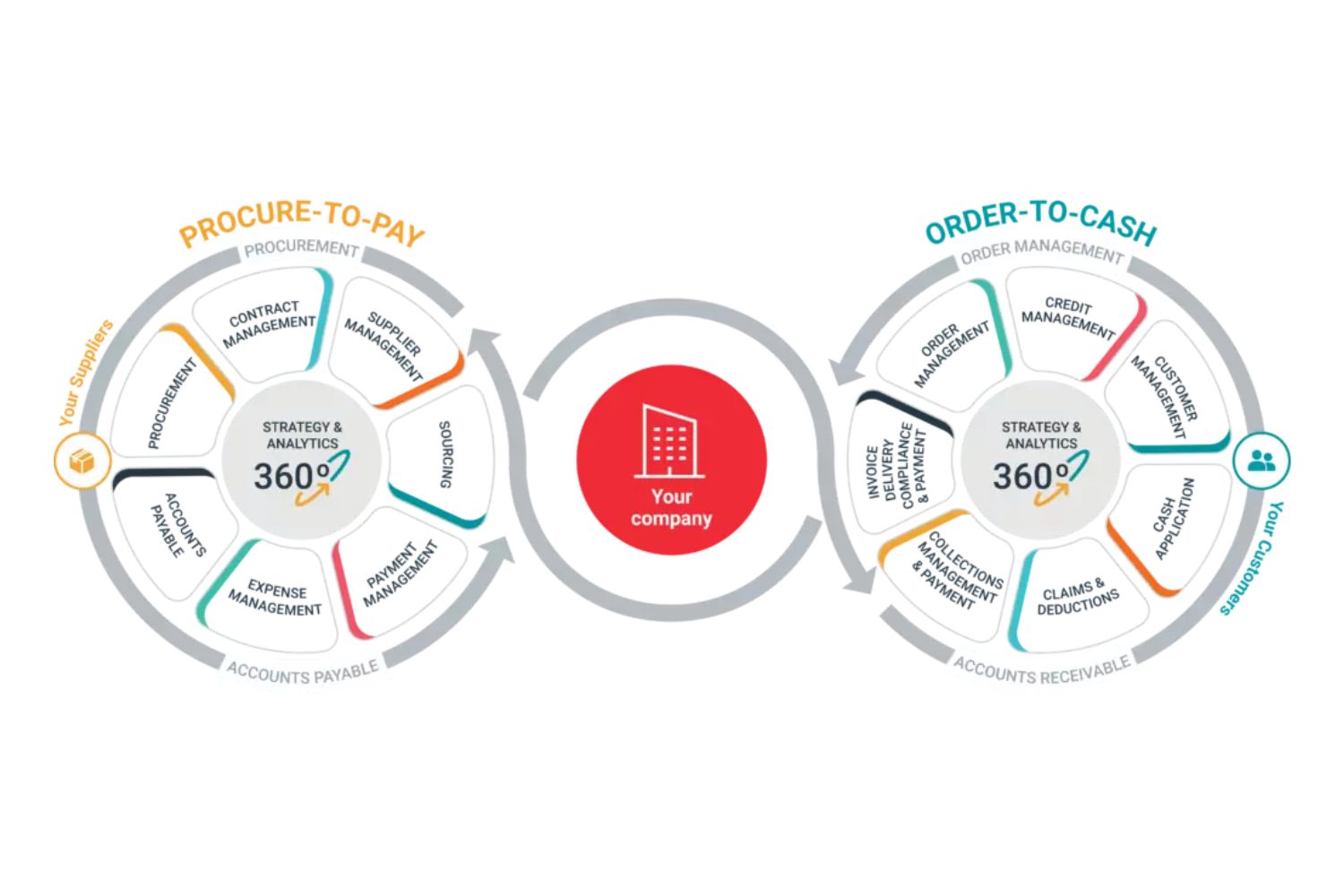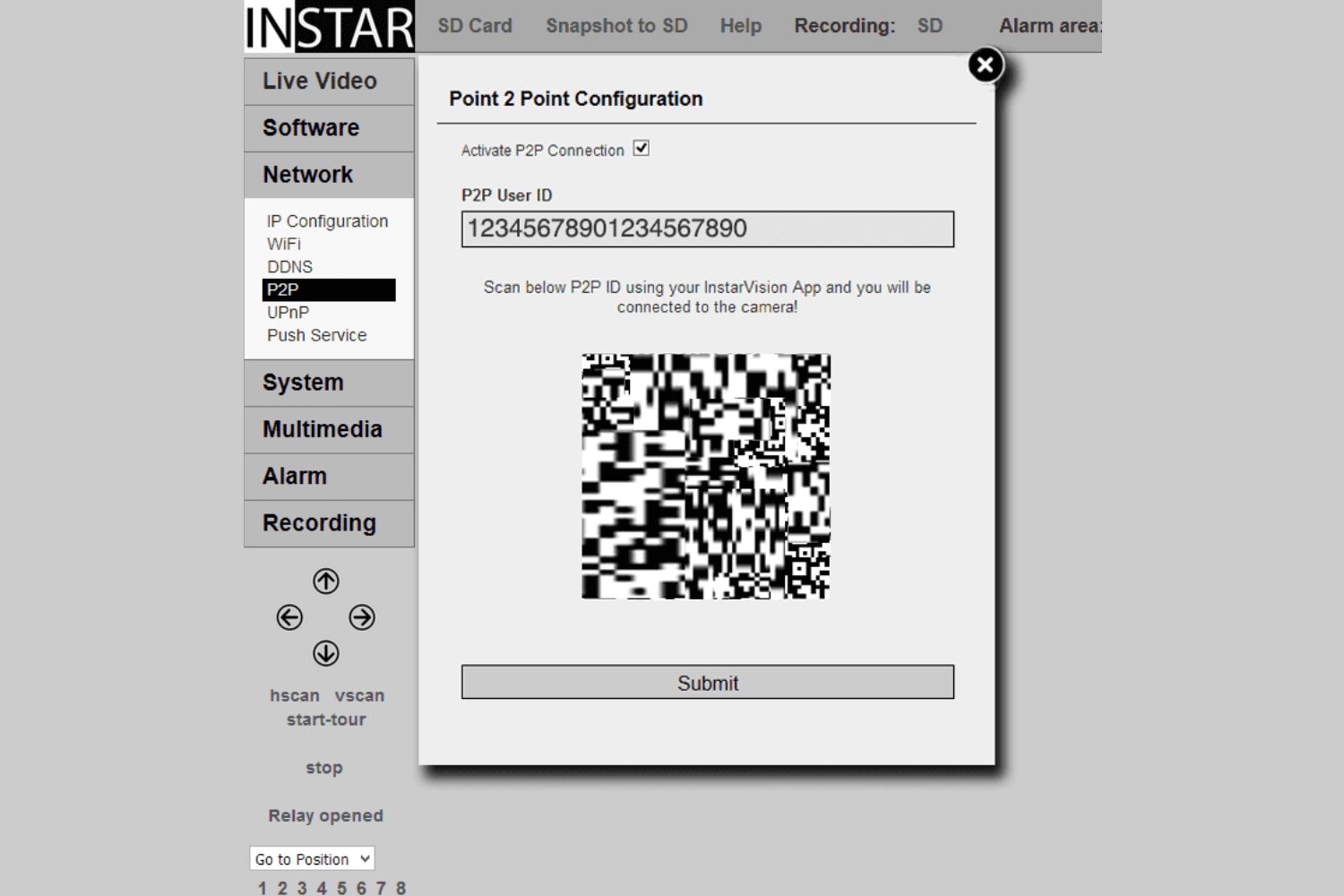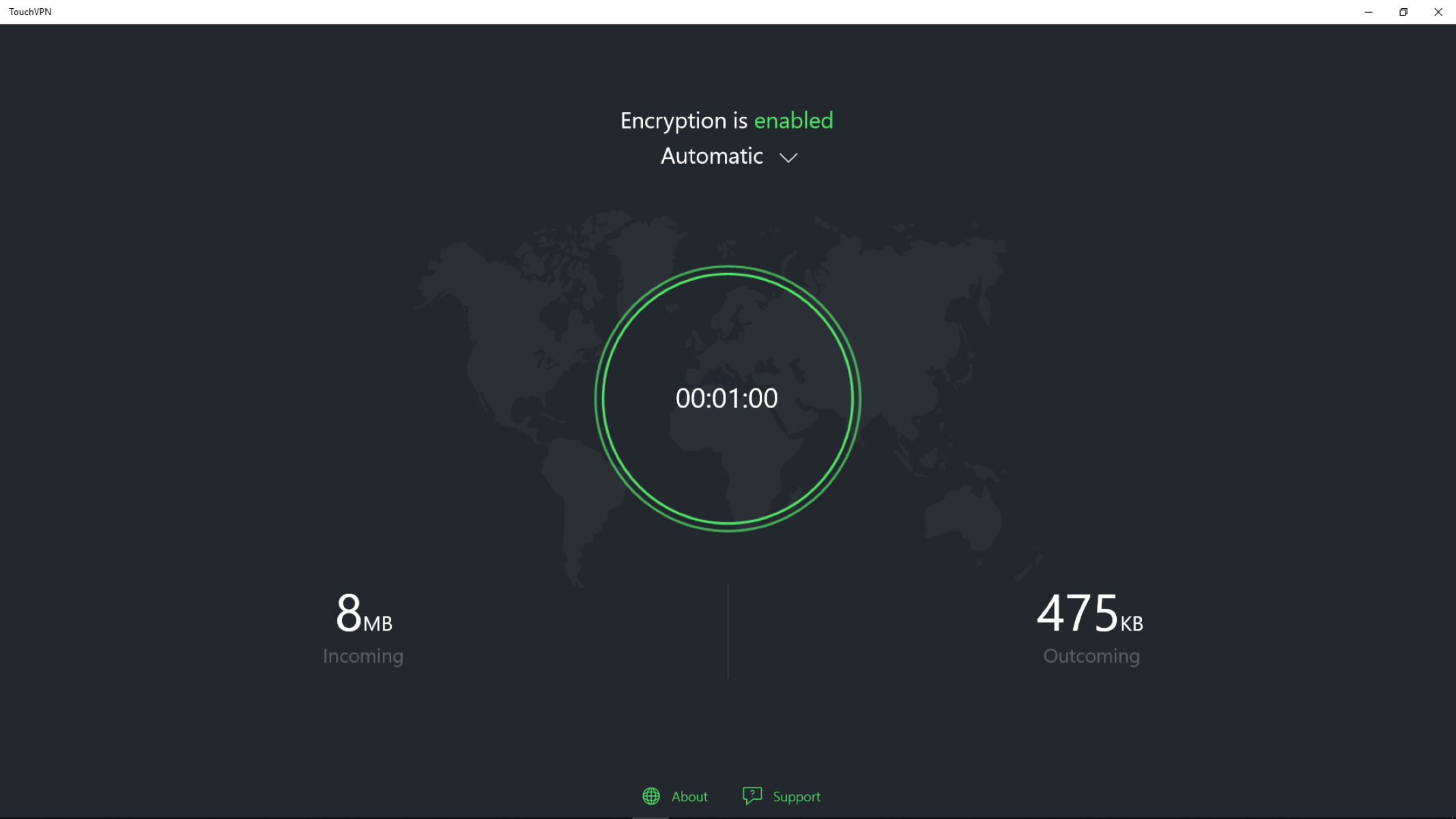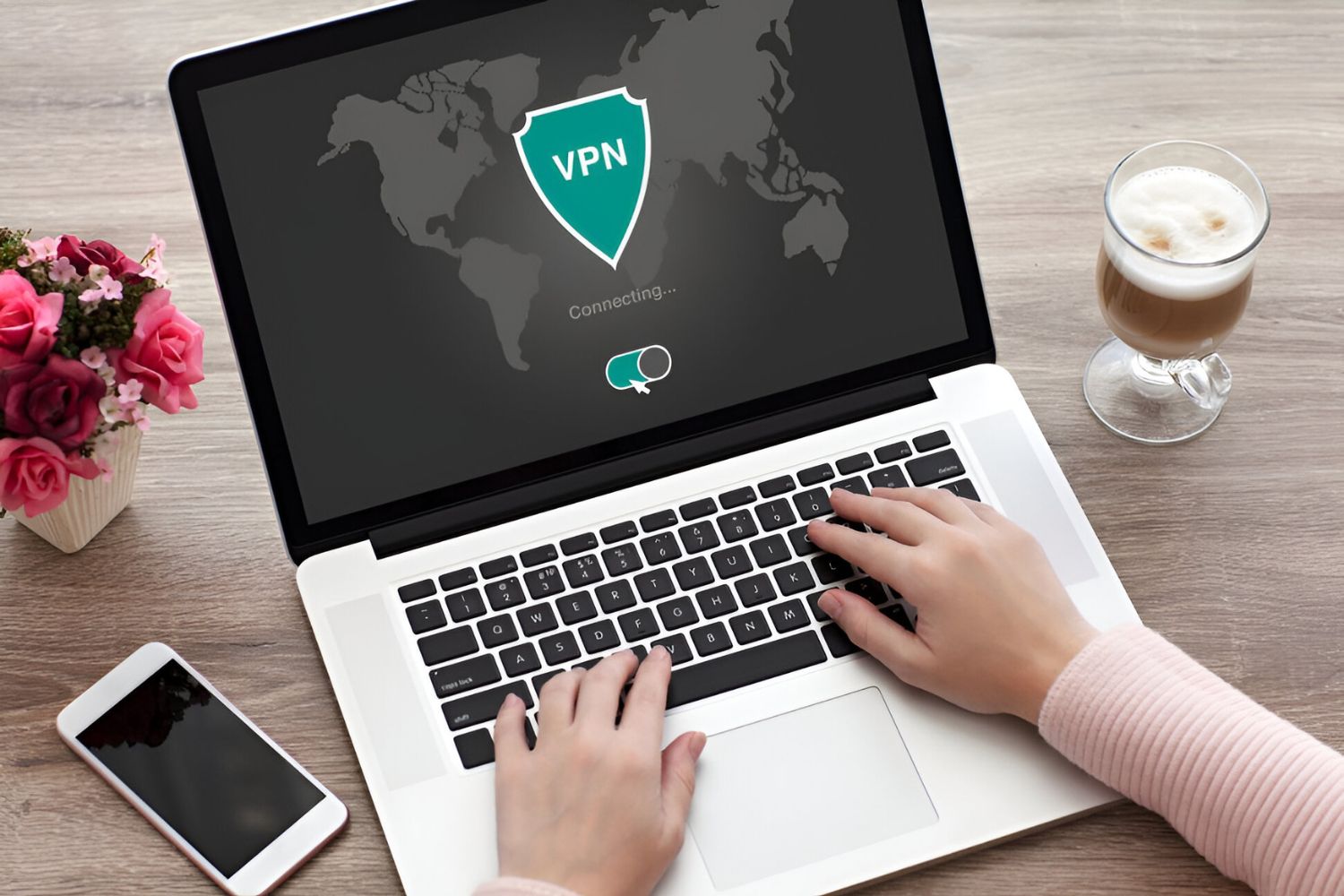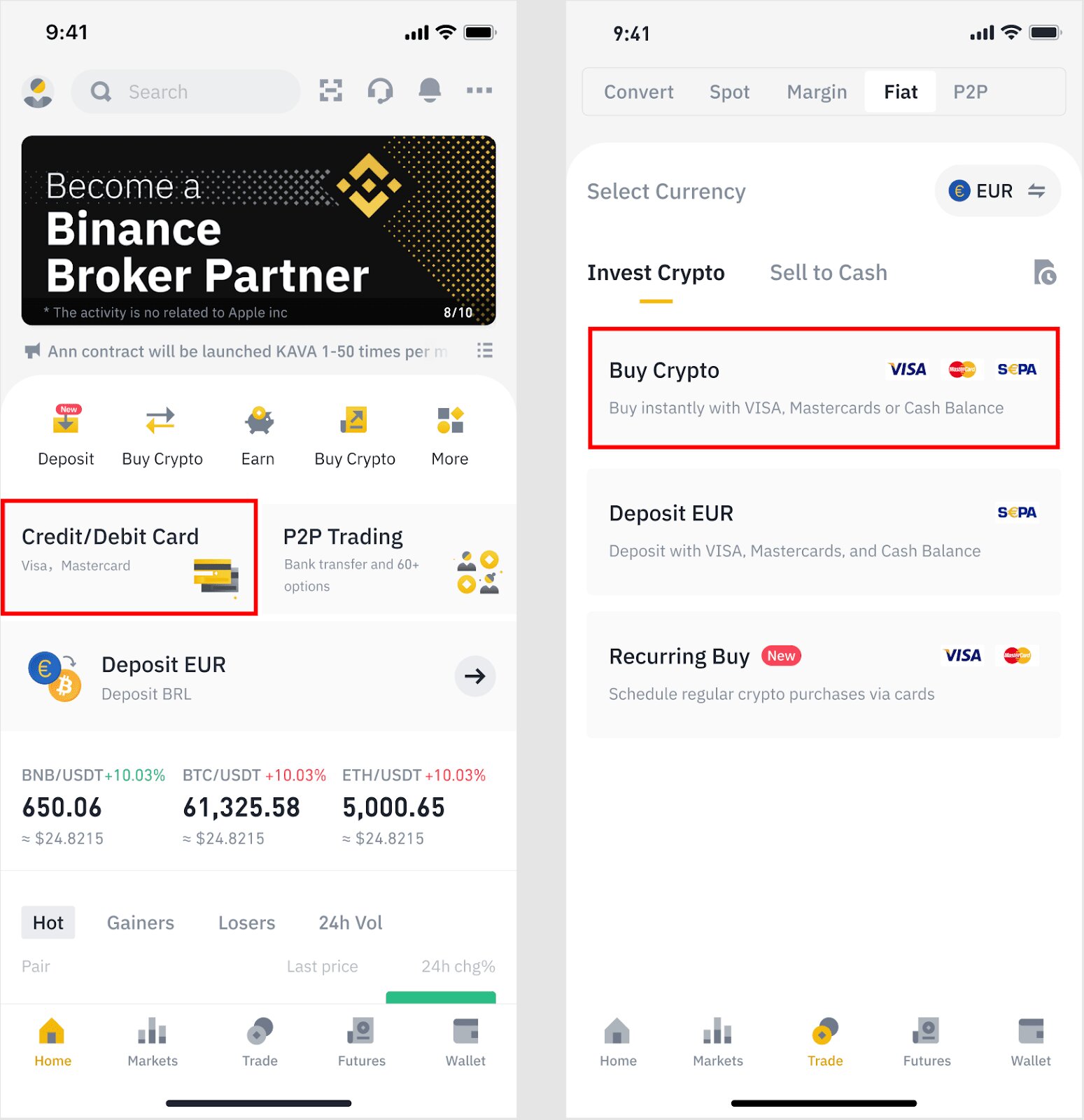Introduction
Welcome to the world of P2P and O2C! In today’s interconnected business landscape, companies strive to streamline their operations and improve efficiency. Two fundamental processes that play a pivotal role in achieving these goals are the procure-to-pay (P2P) and order-to-cash (O2C) processes. Understanding the basics of P2P and O2C is crucial for businesses seeking to optimize their workflows and drive success.
P2P, as the name suggests, refers to the end-to-end process that organizations follow to procure goods and services, from requisition to payment. On the other hand, O2C encompasses the full spectrum of activities involved in fulfilling customer orders, from order placement to payment collection. While P2P focuses on procurement, O2C revolves around sales and order fulfillment. Both processes are vital for the smooth functioning of any business and contribute significantly to its financial health.
In this article, we will delve into the intricacies of P2P and O2C, exploring their process flows, benefits, challenges, and differences. Whether you are a business owner, an aspiring entrepreneur, or a professional looking to expand your knowledge, this comprehensive guide will equip you with the necessary insights to navigate the P2P and O2C landscape.
By optimizing the P2P and O2C processes, companies can achieve cost savings, accelerate cycle times, enhance supplier and customer relationships, and ultimately drive profitability. However, it is important to be aware of the risks and challenges associated with these processes, such as fraud, compliance issues, and operational inefficiencies. Understanding these potential pitfalls is crucial for implementing effective risk management strategies and ensuring the smooth execution of P2P and O2C activities.
So, let’s dive into the world of P2P and O2C and unravel the mysteries behind these essential business processes. Get ready to discover the key elements, best practices, and industry insights that will empower you to optimize your organization’s procurement and order fulfillment functions.
P2P: Understanding the Basics
Before we delve deeper into the P2P process, let’s take a step back and understand the fundamentals. Procure-to-pay (P2P) is a process that businesses use to obtain and pay for the goods and services they need. It encompasses all the steps from the initial requisition of goods or services to the payment made to the supplier.
The P2P process typically starts with the identification of a need within an organization. This need is then converted into a purchase requisition, which outlines the specific details of the requested goods or services. The requisition is then sent for approval to ensure that the purchase aligns with the organization’s policies and budget constraints.
Once the requisition is approved, the next step is to create a purchase order (PO), which formalizes the agreement between the organization and the supplier. The PO includes information such as the item description, quantity, agreed-upon price, delivery date, and terms and conditions.
With the PO in place, the purchase request is sent to the supplier. The supplier fulfills the order and delivers the goods or services to the organization. Upon receiving the delivery, the organization verifies the quantity and quality of the items received against the PO. Any discrepancies are addressed with the supplier through a goods receipt process.
Once the goods receipt is completed, the organization proceeds with the invoice verification. This involves matching the invoice received from the supplier with the corresponding PO and goods receipt. The goal is to ensure that the invoice aligns with the agreed-upon terms and that the organization is billed correctly.
If everything is in order, the invoice is approved for payment. The payment is then processed through the organization’s accounts payable system, and the supplier receives the agreed-upon payment within the specified payment terms. It’s important to note that timely and accurate supplier payments are crucial for maintaining good relationships and securing preferential terms in future transactions.
The P2P process is not limited to just the procurement department; it involves cross-functional collaboration between various departments, including finance, procurement, inventory management, and accounts payable. Streamlining and automating the P2P process can bring numerous benefits, such as improved efficiency, cost savings, better vendor management, and enhanced visibility into spending patterns.
Now that we have grasped the basics of P2P, let’s explore the process flow, benefits, and challenges associated with this essential business process.
P2P Process Flow
Understanding the process flow of P2P is crucial for effectively managing procurement activities within an organization. While the specific steps may vary depending on the company’s policies and systems, the following provides a general overview of the typical P2P process flow:
- Identifying the Need: The P2P process begins with the identification of a need within the organization. This could be a request for goods or services from a department or an individual.
- Create a Requisition: Once the need is identified, the next step is to create a purchase requisition. This document outlines the details of the requested items, including quantity, specifications, and any other relevant information. The requisition is then sent for approval.
- Approval Process: The requisition undergoes an approval process to ensure that the purchase aligns with the organization’s policies and budget constraints. Approvers at various levels review and authorize the requisition, ensuring proper control and accountability.
- Create a Purchase Order (PO): Once the requisition is approved, a purchase order (PO) is created. The PO formalizes the agreement between the organization and the supplier, specifying details such as item descriptions, quantities, agreed-upon prices, delivery dates, and terms and conditions.
- Send PO to Supplier: The authorized PO is sent to the supplier, informing them of the organization’s intention to purchase the specified goods or services. This step establishes a contractual relationship with the supplier.
- Goods Receipt and Inspection: When the supplier delivers the goods, the organization receives them and performs a goods receipt process. This involves verifying the quantity and quality of the items received against the details specified in the PO. Any discrepancies are reported and addressed with the supplier.
- Invoice Verification: After the goods receipt is completed, the organization proceeds with invoice verification. The supplier sends an invoice, which is matched with the corresponding PO and goods receipt. This step ensures that the invoice aligns with the agreed-upon terms and that there are no discrepancies or errors.
- Approve Payment: If the invoice is accurate and meets the organization’s requirements, including any necessary approvals, it is approved for payment. The accounting department reviews and processes the payment using the organization’s accounts payable system.
- Payment to Supplier: Once the payment is processed, the supplier receives the agreed-upon payment within the specified payment terms. Establishing and maintaining good relationships with suppliers is vital for ensuring timely delivery and favorable pricing and terms in the future.
It is important to note that organizations can streamline and automate various steps of the P2P process using digital platforms, electronic approvals, and integration with supplier systems. Automation reduces manual work, improves accuracy, enhances efficiency, and provides better visibility into the procurement process.
Next, let’s explore the benefits that organizations can derive from implementing an effective P2P process.
Benefits of P2P
The procure-to-pay (P2P) process offers numerous benefits to organizations, ranging from cost savings to improved supplier relationships. Let’s explore some of the key advantages:
- Cost Savings: Implementing an effective P2P process enables organizations to negotiate better pricing and terms with suppliers, resulting in cost savings. By streamlining and automating procurement activities, organizations can also minimize manual errors, reduce maverick spend, and enforce compliance with purchasing policies, further driving cost efficiencies.
- Improved Efficiency: P2P automation eliminates time-consuming manual tasks, such as paper-based approvals and invoice processing. With streamlined workflows, organizations can accelerate the procurement cycle, from requisition to payment, reducing lead times and improving overall operational efficiency.
- Better Supplier Management: A well-defined P2P process provides organizations with better visibility and control over supplier relationships. By centralizing supplier data, tracking performance, and monitoring key metrics, organizations can make informed decisions about supplier selection, negotiation, and contract management, leading to stronger partnerships and improved supplier performance.
- Enhanced Visibility: P2P automation offers real-time visibility into the procurement process. Organizations can track the status of purchase orders, monitor inventory levels, and identify potential bottlenecks or delays. This visibility enables proactive decision-making, ensuring that resources are optimally allocated and potential issues are detected and resolved early.
- Compliance and Governance: A robust P2P process ensures compliance with internal policies, regulatory requirements, and industry standards. By enforcing controls, approvals, and audit trails, organizations mitigate the risk of fraud, unauthorized purchases, and non-compliance. This not only safeguards the organization’s reputation but also builds trust with stakeholders.
- Data-Driven Insights: P2P automation generates valuable data and analytics that can drive strategic decision-making. Organizations can analyze spending patterns, identify cost-saving opportunities, and optimize procurement strategies based on accurate, real-time information. Data-driven insights enable better forecasting, demand planning, and supplier negotiations.
By leveraging the benefits of P2P, organizations can optimize their procurement processes, gain a competitive edge, and achieve sustainable growth. However, it’s important to be aware of the risks and challenges associated with P2P, which we will explore in the next section.
Risks and Challenges in P2P
While the procure-to-pay (P2P) process offers significant benefits, organizations must also be aware of the potential risks and challenges that can arise. By understanding and effectively managing these risks, organizations can mitigate potential issues and ensure the smooth execution of the P2P process.
- Fraud and Unauthorized Purchases: One of the primary risks in P2P is the potential for fraud or unauthorized purchases. Lack of proper controls and oversight can lead to the misuse of company funds and the purchase of goods or services without proper approval. Establishing robust approval workflows, implementing segregation of duties, and conducting regular audits are essential to mitigate these risks.
- Non-compliance: Compliance with internal policies, legal regulations, and industry standards is critical in the P2P process. Failure to adhere to these requirements can result in penalties, legal disputes, and damage to the organization’s reputation. Organizations need to establish clear policies, provide training to employees, and implement controls to enforce compliance throughout the P2P process.
- Vendor Management: Managing a large number of vendors can be challenging, especially when it comes to ensuring quality, reliability, and on-time delivery. Organizations must establish clear criteria for selecting and evaluating vendors, conduct due diligence, and maintain effective communication and performance monitoring to mitigate the risks associated with supplier management.
- Data Security: The P2P process involves sensitive information, such as purchase orders, invoices, and payment details. Ensuring the security and confidentiality of this data is essential to protect against data breaches and unauthorized access. Organizations need to implement strong data encryption, access controls, and regular data backups to safeguard sensitive information.
- Integration Challenges: Integrating different systems and technologies can be a complex task in the P2P process. Incompatibility between systems, data inconsistencies, and process gaps can hinder seamless information flow and cause inefficiencies. Proper planning, system integration, and data synchronization are crucial to overcome integration challenges and ensure smooth P2P operations.
- Change Management: Implementing new P2P processes and technologies may require changes in organizational culture, workflows, and employee roles. Resistance to change, lack of proper training, and ineffective communication can slow down the adoption and effectiveness of new P2P practices. Organizations must invest in change management strategies, providing necessary training and support to employees during the transition.
Addressing these risks and challenges requires a proactive approach, strong governance, and ongoing monitoring. Implementing effective controls, conducting regular audits, and staying updated with industry best practices can help organizations mitigate potential threats and ensure the successful execution of the P2P process.
Now that we have explored the risks and challenges in P2P, let’s move on to understanding the order-to-cash (O2C) process.
O2C: An Overview
The order-to-cash (O2C) process is a vital component of a company’s operations, encompassing all the steps involved in fulfilling customer orders and collecting payment. It is a key process in the sales and revenue cycle and plays a critical role in maintaining positive customer relationships. Let’s explore the key aspects of the O2C process and its significance in business operations.
The O2C process starts with receiving a customer order, either through a sales representative, an online platform, or other channels. Once the order is received, it is reviewed for accuracy, availability of inventory, and pricing. Any necessary adjustments or clarifications are made at this stage to ensure the order can be fulfilled.
Once the order is confirmed, the organization prepares for order fulfillment by picking, packing, and shipping the products or initiating the delivery of services. This stage involves coordinating with various departments, such as warehouse and logistics, to ensure timely and accurate delivery to the customer.
After the goods or services are delivered to the customer, the organization generates an invoice, either in physical or electronic form, detailing the products or services provided, the agreed-upon prices, any applicable taxes, and payment terms. The invoice is then sent to the customer for payment.
The customer is responsible for reviewing the invoice, verifying the accuracy of the bill, and arranging for payment within the agreed-upon payment terms. Depending on the organization’s policies and practices, various payment options may be available, including credit cards, checks, electronic funds transfer (EFT), or online payment platforms.
Once the payment is received, the organization applies the payment to the customer account, reconciling it with the corresponding invoice. This step ensures proper bookkeeping and maintains accurate financial records. In cases where late payment or disputes arise, organizations may need to initiate a collection process to recover outstanding amounts.
The O2C process also involves managing customer relationships, providing superior customer service, and addressing any inquiries, complaints, or issues that may arise during the order fulfillment and payment collection stages. Effective communication, timely resolution of customer concerns, and a customer-centric approach are vital for maintaining customer loyalty and satisfaction.
By efficiently managing the O2C process, organizations can achieve several benefits, including improved cash flow, reduced order-to-cash cycle times, enhanced customer satisfaction, better inventory management, and increased profitability. It also provides valuable insights into sales trends, customer behavior, and revenue forecasting, facilitating strategic decision-making.
Now that we have gained an overview of the O2C process, let’s explore the details of its process flow in the next section.
O2C Process Flow
The order-to-cash (O2C) process consists of several interconnected steps that organizations follow to fulfill customer orders and collect payment. While the specific details may vary depending on the industry and organization, the following provides a general overview of the typical O2C process flow:
- Order Placement: The O2C process begins when a customer places an order. This can be done through various channels, such as a sales representative, e-commerce platform, or phone order. The order details, including product or service specifications, quantity, and delivery requirements, are captured at this stage.
- Order Processing: Once the order is received, it is reviewed for accuracy and availability. This includes checking inventory levels, pricing, and any special requirements or restrictions. Any adjustments or clarifications are made to ensure the order can be fulfilled.
- Order Fulfillment: After the order is confirmed, the organization moves forward with fulfilling it. This involves activities such as picking the products from the inventory, packing them securely, and arranging for shipping or delivery. Coordinating with the warehouse, logistics, and transportation departments is essential to ensure timely and accurate delivery to the customer.
- Invoice Generation: Once the goods or services are delivered, the organization generates an invoice detailing the products or services, the agreed-upon prices, any applicable taxes, and payment terms. The invoice is then sent to the customer through either physical or electronic means.
- Payment Collection: Upon receiving the invoice, the customer reviews and verifies the bill. They then initiate the payment process according to the agreed-upon payment terms. The organization may offer various payment options, such as credit cards, checks, electronic funds transfer (EFT), or online payment platforms, to facilitate timely and convenient payment.
- Payment Application: After the payment is received, the organization applies it to the customer’s account to reconcile it with the corresponding invoice. This step ensures accurate financial records and helps identify any outstanding payments or discrepancies.
- Customer Relationship Management: Throughout the O2C process, maintaining strong customer relationships is vital. Organizations need to address customer inquiries, concerns, and issues promptly and effectively. Providing quality customer service enhances customer satisfaction and fosters long-term loyalty.
- Collection Management: In cases where customers fail to make timely payments or disputes arise, organizations may need to initiate a collection process. This involves communicating with the customer, sending reminders, and escalating collection efforts if necessary to recover outstanding amounts.
Streamlining and automating the O2C process can bring numerous benefits, such as improved order accuracy, faster order processing, enhanced customer satisfaction, reduced errors, and optimized cash flow. By effectively managing the O2C process flow, organizations can maximize efficiency, strengthen customer relationships, and drive business growth.
Now that we have explored the O2C process flow, let’s dive into the benefits it can bring to organizations.
Benefits of O2C
The order-to-cash (O2C) process offers a multitude of benefits to organizations, contributing to improved efficiency, customer satisfaction, and financial stability. Let’s explore the key advantages that organizations can derive from an effective O2C process:
- Streamlined Operations: Implementing an efficient O2C process streamlines the order fulfillment and payment collection activities. By optimizing workflows, organizations can reduce manual errors, eliminate duplicate data entry, and accelerate cycle times. This results in smoother operations and enhanced productivity.
- Improved Cash Flow: The O2C process plays a critical role in managing an organization’s cash flow. By promptly invoicing customers and implementing effective payment collection strategies, organizations can minimize cash flow gaps, reduce days sales outstanding (DSO), and ensure a steady inflow of cash.
- Enhanced Customer Satisfaction: A well-executed O2C process contributes to a positive customer experience. Timely order fulfillment, accurate invoices, and efficient payment collection lead to increased customer satisfaction and loyalty. Providing a seamless O2C experience can differentiate an organization and foster long-term customer relationships.
- Improved Forecasting and Planning: The O2C process provides organizations with valuable data and insights into customer behavior, sales trends, and revenue forecasts. By analyzing this information, organizations can make informed business decisions, identify growth opportunities, and optimize inventory management and production planning.
- Efficient Dispute Resolution: The O2C process includes mechanisms for managing customer inquiries, concerns, and disputes. By promptly addressing customer issues and resolving them effectively, organizations can minimize the impact on customer relationships and prevent delays in payment collection.
- Optimized Inventory Management: With a well-implemented O2C process, organizations can gain better visibility and control over their inventory levels. Accurate order fulfillment and real-time inventory monitoring enable organizations to optimize stock levels, reduce carrying costs, and prevent stockouts or overstock situations.
- Financial Stability: Efficient management of the O2C process contributes to financial stability and risk mitigation. By ensuring timely payment collection and accurate financial records, organizations can maintain healthy cash flow, meet financial obligations, and demonstrate good financial health to stakeholders.
Embracing the benefits of an effective O2C process can result in significant competitive advantages for organizations. It fosters operational excellence, strengthens customer relationships, and supports sustainable growth.
However, it is important to be aware of the risks and challenges associated with O2C, which we will explore further in the next section.
Risks and Challenges in O2C
The order-to-cash (O2C) process, while offering numerous benefits, also presents its fair share of risks and challenges. Understanding and proactively addressing these potential pitfalls is crucial for organizations to ensure the smooth execution of the O2C process. Let’s explore some of the common risks and challenges in O2C:
- Order Errors: Mistakes in the order entry process can result in incorrect shipments, delays, or wrong invoicing. This can lead to customer dissatisfaction, disputes, and potential revenue loss. Establishing strong controls, employing automated order entry systems, and implementing double-check procedures can help minimize the risk of order errors.
- Disputed Invoices: Disputed invoices occur when customers question the validity, accuracy, or quality of the products or services provided. Dealing with invoice disputes can disrupt cash flow, strain customer relationships, and consume valuable resources. Organizations should have clearly defined dispute resolution procedures, effective communication channels, and comprehensive documentation to address disputes promptly and fairly.
- Credit and Collection Risks: Offering credit terms to customers introduces the risk of delayed or non-payment. Poor assessment of customer creditworthiness, ineffective credit limits, and inadequate collection processes can result in uncollectible debts and cash flow challenges. Establishing robust credit risk assessment protocols, implementing effective credit limits, and regularly monitoring customer payment patterns can mitigate these risks.
- Order Fulfillment Delays: Delays in order fulfillment can harm customer satisfaction, affect relationships, and potentially result in lost business opportunities. Inefficient inventory management, supply chain disruptions, and coordination issues can contribute to order fulfillment delays. Organizations need to implement effective production planning, maintain optimal inventory levels, and establish streamlined communication and collaboration channels with suppliers and logistics partners.
- System and Technology Challenges: Inadequate IT infrastructure, system integration issues, and outdated technology can hinder the O2C process. Inefficiencies in order management systems, inventory management tools, and financial systems can lead to delays, inaccuracies, and customer dissatisfaction. Regular assessments of IT capabilities, investing in modern O2C technologies, and ensuring robust system integration are necessary to overcome these challenges.
- Regulatory Compliance: Compliance with legal regulations, such as tax laws, data privacy rules, and industry-specific regulations, is vital in the O2C process. Failure to comply with these requirements can result in financial penalties, legal disputes, and reputational harm. Organizations must stay updated with relevant regulations, implement necessary controls, and maintain proper documentation to mitigate compliance risks.
- Customer Relationship Management: Managing customer relationships effectively requires consistent communication, prompt issue resolution, and a customer-centric approach. Failing to address customer concerns or provide satisfactory support can damage relationships and lead to customer churn. Organizations should invest in training customer-facing teams, adopting complaint management processes, and leveraging CRM systems to enhance customer relationship management.
By acknowledging these risks and challenges, organizations can develop strategies and implement controls to mitigate their impact on the O2C process. Regular monitoring, continuous improvement initiatives, and effective communication within and across departments are essential for successful O2C operations.
Now that we have explored the risks and challenges in O2C, let’s move on to understand the key differences between the P2P and O2C processes.
Differences Between P2P and O2C
The procure-to-pay (P2P) and order-to-cash (O2C) processes are two distinct but interconnected processes within an organization. While both processes play important roles in overall business operations, they have significant differences. Let’s explore the key distinctions between P2P and O2C:
- Focus: P2P is primarily focused on the procurement of goods and services within an organization, involving activities such as requisitioning, sourcing, ordering, and payment. On the other hand, O2C revolves around the sales and order fulfillment process, encompassing activities such as order placement, order processing, order fulfillment, invoicing, and payment collection.
- Nature of Transactions: In the P2P process, organizations engage with external suppliers to procure goods and services necessary for their operations. The transactions involve purchasing materials, negotiating contracts, and making payments to suppliers. In contrast, the O2C process involves transactions with customers, focusing on selling products or services, generating invoices, and collecting payments.
- Internal versus External Focus: P2P primarily deals with internal stakeholders, such as procurement teams, finance departments, and accounts payable. It focuses on streamlining and optimizing internal procurement workflows. O2C, on the other hand, is customer-centric and involves interactions with external stakeholders, including sales teams, logistics partners, and customers.
- Starting Point: The P2P process typically begins with the identification of a need within the organization, which leads to the creation of a purchase requisition and subsequent steps to procure the required goods or services. In contrast, the O2C process starts with the receipt of a customer order, initiating the process of fulfilling the order and collecting payment.
- Payment Flow Direction: In P2P, the cash flow direction is outward, as organizations make payments to suppliers in exchange for the goods and services they provide. Conversely, in the O2C process, the cash flow direction is inward, as organizations receive payment from customers for the products or services they deliver.
- Accounting Treatment: The accounting treatment for P2P focuses on managing accounts payable, maintaining supplier records, and ensuring accurate payment processing. Conversely, in O2C, the focus is on accounts receivable management, tracking customer transactions, and recording revenue generated from sales.
- Metrics and Performance Indicators: Different metrics and performance indicators are used to measure the effectiveness of the P2P and O2C processes. In P2P, metrics such as purchase order cycle time, cost savings achieved, and supplier performance are key indicators. In O2C, metrics such as order cycle time, order fulfillment accuracy, DSO (Days Sales Outstanding), and customer satisfaction are commonly used to assess performance.
Understanding and managing the differences between P2P and O2C is crucial for organizations to optimize these processes and ensure seamless integration across the entire supply chain. Recognizing the unique characteristics and requirements of each process allows organizations to implement tailored strategies and technologies to drive operational excellence and enhance customer relationships.
Now that we have explored the differences between P2P and O2C, let’s wrap up our discussion.
Conclusion
The procure-to-pay (P2P) and order-to-cash (O2C) processes are crucial components of an organization’s operations. While P2P focuses on procurement, O2C revolves around sales and order fulfillment. Understanding the basics, process flows, benefits, risks, and challenges associated with P2P and O2C is essential for organizations to optimize these processes and drive success.
The P2P process encompasses activities from requisition to payment, ensuring the procurement of goods and services meets the organization’s needs, policies, and budget constraints. On the other hand, the O2C process involves order placement, fulfillment, invoicing, and payment collection, focusing on delivering products or services to customers and ensuring timely payment.
Both processes offer numerous benefits to organizations. P2P contributes to cost savings, improved efficiency, better supplier management, enhanced visibility, compliance, and data-driven insights. O2C brings streamlined operations, improved cash flow, enhanced customer satisfaction, optimized inventory management, and financial stability.
However, organizations must also be aware of the risks and challenges associated with P2P and O2C. These include fraud, non-compliance, vendor management, data security, system integration challenges, and change management. Mitigating these risks requires robust controls, effective communication, and continuous monitoring.
Although P2P and O2C have their unique characteristics and focus areas, organizations must recognize the interdependencies between these processes. Seamless integration between procurement and order fulfillment is essential for driving efficiency, customer satisfaction, and financial success.
In conclusion, by understanding and effectively managing the P2P and O2C processes, organizations can optimize their procurement activities, enhance customer relationships, improve operational efficiency, and drive sustainable growth. Implementing best practices, leveraging technology, and staying proactive in addressing challenges are key to achieving these objectives and staying ahead in today’s competitive business landscape.







